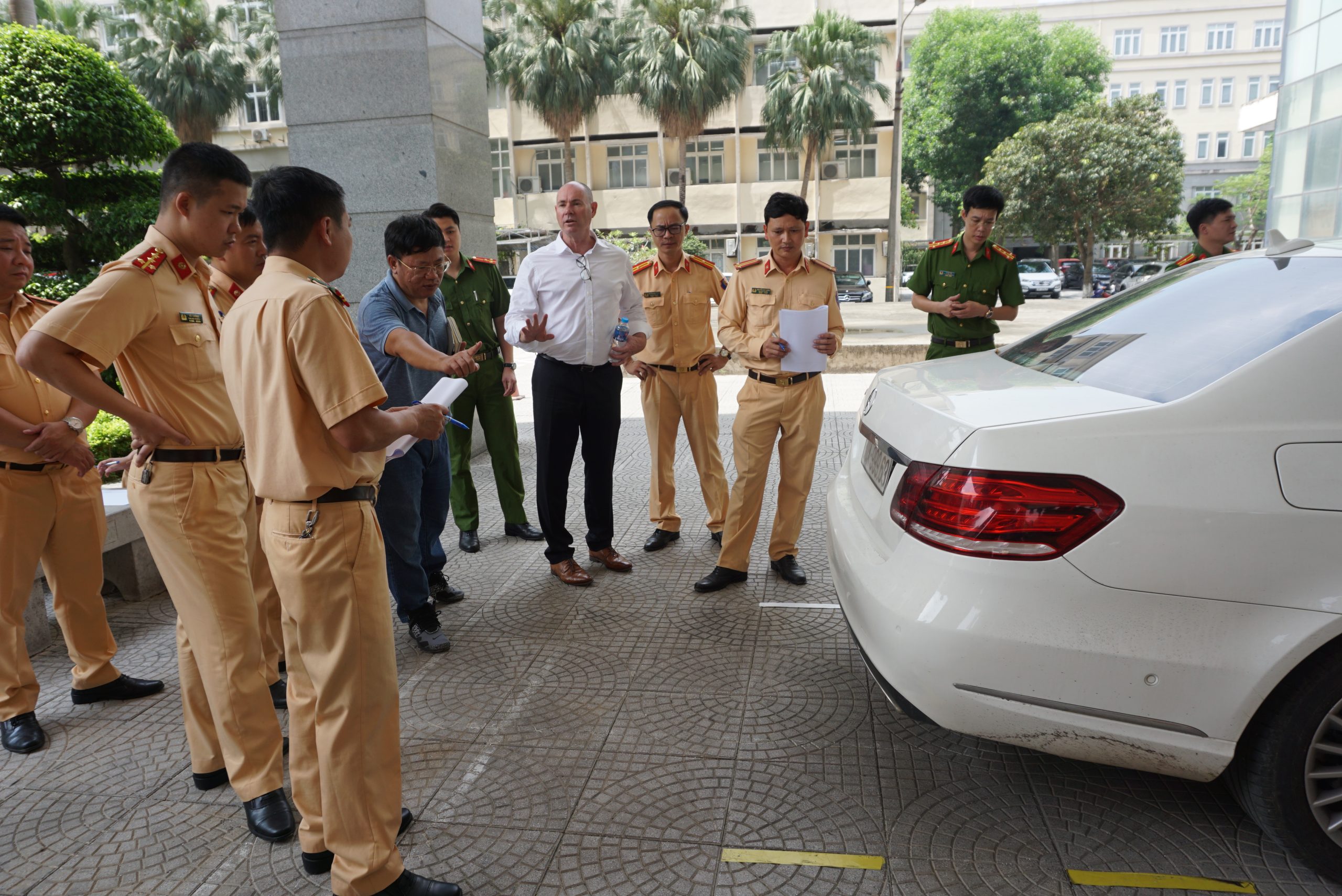
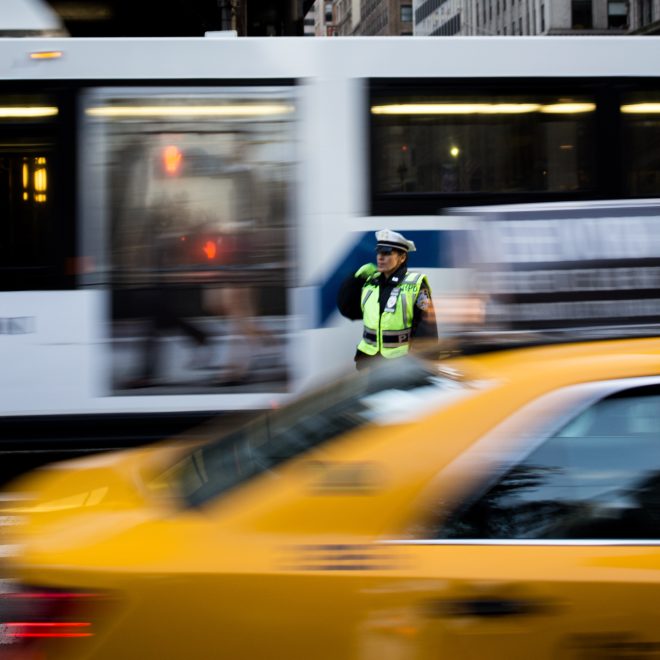
Every day across every country, there are an enormous number of traffic crashes. There are no useful estimates of the numbers, but the vast majority are minor and result only in vehicle damage and in some cases, minor injuries. Minor crashes often occur during weekday commuting periods in congested traffic and at low speeds.

Every day across every country, there are an enormous number of traffic crashes. There are no useful estimates of the numbers, but the vast majority are minor and result only in vehicle damage and in some cases, minor injuries. Minor crashes often occur during weekday commuting periods in congested traffic and at low speeds.
On top of minor crashes, around 3,700 global crash fatalities and 55,000 serious injuries occur daily. Fatal and serious injury (FSI) crashes are more likely to involve higher speeds, alcohol impairment, failure to wear seat belts or use quality helmets and other aggravating factors. The times, days of the week and locations can be quite different to most minor crashes.
As examples, a review of FSI alcohol-related crashes carried out in New Zealand showed these peaked over weekend evenings (Friday night – to the early hours of Saturday morning and Saturday night to the early hours of Sunday morning). Similarly, FSI speed-related crashes also tended to peak late at night and in the early hours of the morning over weekends.
When police focus on days, times and locations when and where ‘all’ crashes peak; they risk focusing their efforts on the wrong times and locations to allow them to prevent serious road trauma. By including minor crashes in the analysis, it will tend to skew the picture and show a peak during weekday commuting periods and on commuting routes.
Crash data analysis should assess FSI crash trends and understand the days, times and locations when and where serious crashes occur. Trends can be different within and between countries and local FSI crash patterns need to be reviewed to identify relevant local trends.
Quality serious crash data that accurately records all FSI crashes, times and locations is essential for road policing to focus activity to periods of greatest risk.
Dave Cliff, ONZM MStJ
CEO, GRSP
Recent legislative developments in the Philippines provided opportunities to strengthen existing speed enforcement technical capacity in relation to enforcing child restraint use for the first time in this country.
The Global Road Safety Partnership’s (GRSP) Road Policing Capacity Building programme team worked closely with government and non-government agencies in the Philippines in developing and delivering a series of classroom and roadside theoretical and operational training sessions.
Recent legislative developments in the Philippines provided opportunities to strengthen existing speed enforcement technical capacity in relation to enforcing child restraint use for the first time in this country.
The Global Road Safety Partnership’s (GRSP) Road Policing Capacity Building programme team worked closely with government and non-government agencies in the Philippines in developing and delivering a series of classroom and roadside theoretical and operational training sessions.
Out of this experience, the GRSP published a paper in the Journal of Road Safety focusing on how these training sessions resulted in the establishment of a core group of trainers from within local enforcement agencies in the country. This group received initial training as well as ongoing coaching and mentoring support from GRSP to establish a sustainable model of enforcement capability development.
In the paper, various training methods and curriculum topics are described, noting the importance of supporting in-country partners to determine relevant, context-specific issues according to local needs in the country. This body of work provides a useful example of mechanisms to transfer specific knowledge from the field of traffic law enforcement to police officers in a systematic way, and to build training and enforcement capacity in a sustainable manner.
Read the paper here: Strengthening Speed and Child Restraint Enforcement Capacity in the Philippines

Aimed at policymakers and road safety practitioners, the Occupant Restraints: A Road Safety Manual for Decision-Makers and Practitioners manual has recently been revised to include new evidence and case studies.
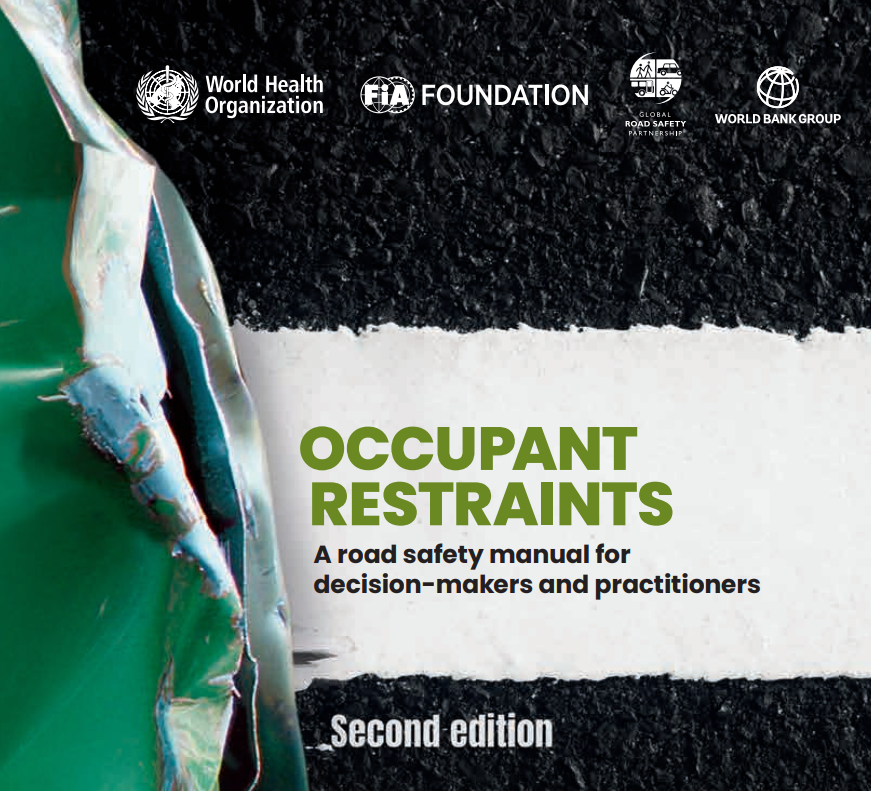

Aimed at policymakers and road safety practitioners, the Occupant Restraints: A Road Safety Manual for Decision-Makers and Practitioners manual has recently been revised to include new evidence and case studies.
With increasing motorization which has resulted in an increase in road traffic crashes and injuries, especially in low- and middle-income countries, one of the most effective measures to protect vehicle occupants from severe injuries in the event of a crash is the appropriate fitment and use of seat-belts and child restraints. Use of restraints has proven to save lives and reduce the severity of injuries.
The use of powered two- and three-wheelers (PTWs), such as motorcycles, mopeds, and electric bikes, has been on the rise in several countries over the years. The increase in this mode of transportation calls for evidence-based interventions.
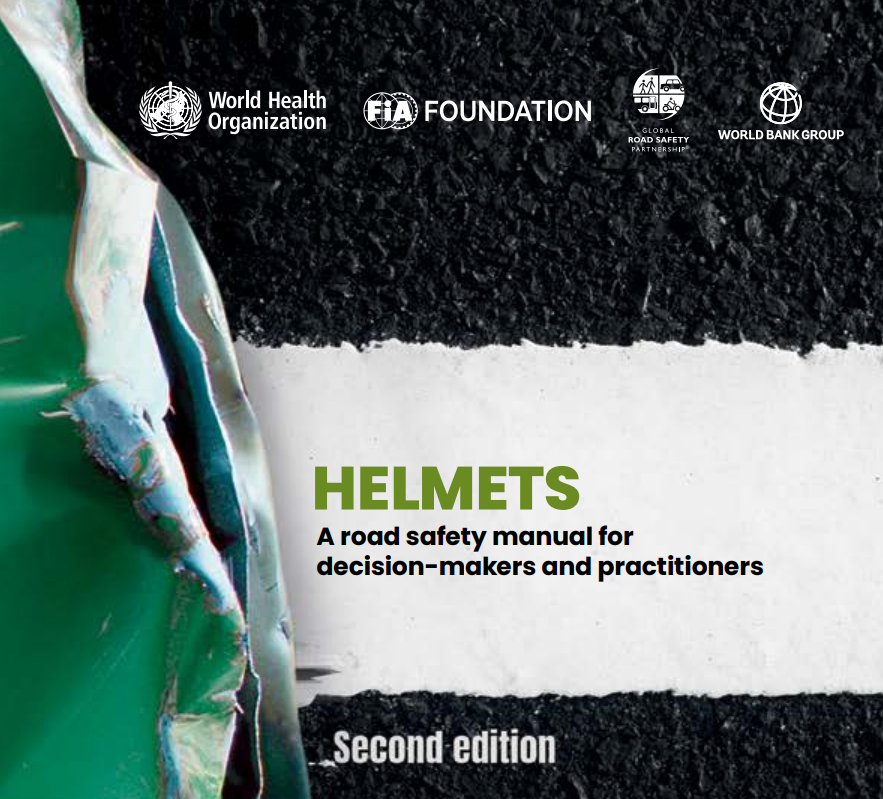

The use of powered two- and three-wheelers (PTWs), such as motorcycles, mopeds, and electric bikes, has been on the rise in several countries over the years. The increase in this mode of transportation calls for strong and evidence-based interventions that bring about sustained and adequate helmet use.
Unfortunately, ineffective enforcement, weak legislation, the lack of affordable quality helmets, and misinformation are some of the challenges within the equation. To that end, the World Health Organization (WHO), FIA Foundation, World Bank Group, and the Global Road Safety Partnership (GRSP) present the revised Helmets: A Road Safety Manual for Decision-Makers and Practitioners—a guide that shares best practice to aid in the reduction of injuries and deaths resulting from non-use of helmets during a collision.

By: Russell Nyman, GRSP Senior Road Policing Advisor
Drink driving enforcement in the United Kingdom (UK) has long been established in law under Section 4 of the Road Traffic Act 1988 with the legal limit set of 80 milligrams of alcohol in 100 millilitres of blood—which unfortunately exceeds the international good practice guidelines set by the World Health Organization (WHO).

By: Russell Nyman, GRSP Senior Road Policing Advisor
Drink driving enforcement in the United Kingdom (UK) has long been established in law under Section 4 of the Road Traffic Act 1988 with the legal limit set of 80 milligrams of alcohol in 100 millilitres of blood—which unfortunately exceeds the international good practice guidelines set by the World Health Organization (WHO).
Drink driving in the UK is now largely an unacceptable practice, however, there are those that flout the laws and drive when intoxicated.
All UK police forces/services have drink drive campaigns that are largely seasonal, mainly summer and winter around the Christmas period. Nonetheless, the law is there to be applied all year round, and is, by both general patrol office staff and traffic officers.
Each overt campaign would have a multimedia campaign in advance, during the operation, and at the conclusion of the operation. Firstly, to warn the public in advance with direct and subliminal messaging e.g., radio broadcasts, text messages when in a certain defined area, and messaging on multimedia platforms in supermarkets are just some examples of both approaches. Then, during the actual operation to enforce the message and physical overt activity, and at the conclusion with the results advising the community that further enforcement would follow. This is deterrence theory in practice.
The execution of the operation may involve other enforcement partners such as highway agencies, Trading Standards and vehicle and operator services to maximize impact. Additionally, detective officers may be involved under the notion of ‘denying criminals the use of roads’ and an Achilles’ heel approach to tackling recidivist offenders e.g., target criminals for excess breath alcohol or disqualified driving offences.
Each venue would be risk assessed from an officer and public safety perspective, with high-visibility clothing, suitable lighting, cones, ‘sally port’ system to control and manage vehicles with spotters, pursuit vehicles, CCTV and an operational commander.
It is imperative to keep all road users and pedestrians safe and conducting drink drive enforcement operations is one tactical option in achieving this.
By: Paul Simcox, GRSP Senior Road Policing Advisor
I joined the police in the United Kingdom 31 years ago before transferring to New Zealand Police in 2006. I have trained as a serious crash investigator and given expert evidence in the High Court of New Zealand and at Coronial Inquests. My most recent role was managing Infringement and Calibration services for New Zealand Police including being a member of NZ’s Road Policing Senior Leadership team.

By: Paul Simcox, GRSP Senior Road Policing Advisor
I joined the police in the United Kingdom 31 years ago before transferring to New Zealand Police in 2006. I have trained as a serious crash investigator and given expert evidence in the High Court of New Zealand and at Coronial Inquests. My most recent role was managing Infringement and Calibration services for New Zealand Police including being a member of NZ’s Road Policing Senior Leadership team.
Three years ago, a close friend of mine was killed riding his bicycle after being struck from the rear by a vehicle traveling out of their lane. The driver had been texting at the time of the crash. A conscious decision to use that phone ultimately led to someone losing their life.
Texting while driving is increasingly being identified as a contributing factor in serious crashes. Looking at a phone, reaching for something in the car, or simply eating will take precious time away from reacting to a hazard. According to Australia’s TAC, looking away from the road for two seconds when you are traveling at a speed of 50 km/h will see you travel around 28 meters, doubling your crash risk. This is precious time and distance that cannot be recovered.
All too often as a crash investigator, I have seen first-hand the life-changing impacts that distracted driving can have on those involved in road traffic crashes and their families. Through the promotion of enforceable legislation, supported by coordinated public awareness campaigns, and the effective deployment of technology and police enforcement, a reduction in distracted driving-related harm can contribute to a reduction in road crash death and injury.
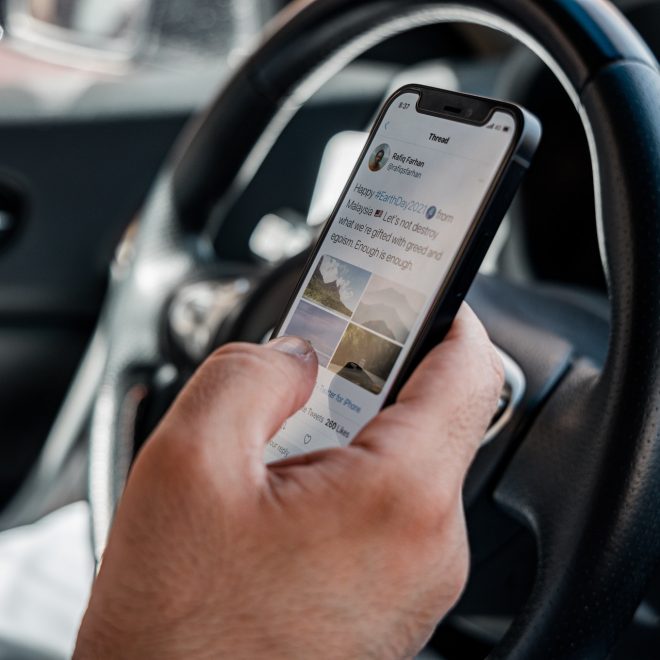
Our Road Policing Capacity Building team members delivered capacity building training workshops to traffic police in both Hanoi and Ho Chi Minh City (HCMC) in June 2023. The training—which focused on speed enforcement and crash investigation—was jointly conducted with the Global Road Safety Partnership’s Viet Nam training partner, The People’s Police Academy (PPA), and was attended by 130 police officers.
As part of the Bloomberg Philanthropies Initiative for Global Road Safety (BIGRS) programme, the workshops shared best practice knowledge and practice related to the role that speed enforcement plays in reducing road trauma, as well as the safe and practical application of enforcement in the local context.
Additionally, officers were able to learn techniques to assist them in the investigation of causative factors in road crashes, which helps to then understand possible mitigation strategies to aid in reducing resulting trauma from collisions.
This exchange of information and learning is ongoing with further training scheduled in October 2023 in both Hanoi and HCMC, in addition to the start of similar road safety training for road policing specialists commencing in Da Nang later in the year.
